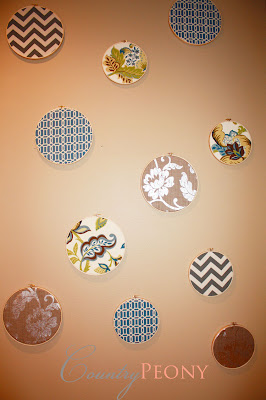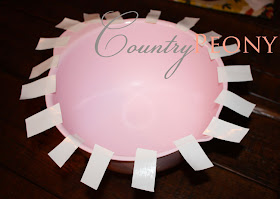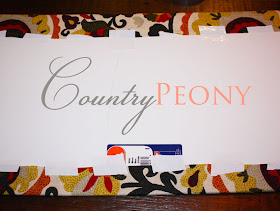I have been thinking for months about a cost-effective
decoration for our blank wall in our living room. My initial inspiration came
from the polished, yet simple, look of various plates mounted to a wall. I also
wanted to stay within our color scheme of dark blue, wood tones, and silver. As
I started to research plate options, I soon discovered I would have to pay more
than I wanted to for the look I was after.
So, as I researched more ideas online I noticed this post
from Apartment Therapy
 |
| via |
I thought this would be a perfect solution. I could pick out my own fabric and
create a fun, personalized pattern. This project would also hold nostalgic
value for me, because it reminds me of my late grandmother who taught me how to
embroider with her embroidery hoops.
For this project you will need: several yards of different
fabric patterns, embroidery hoops of varying sizes (I used six 10 inch hoops,
and five 8 inch hoops), scissor, hammer, and nails to hang the fabric hoops onto the wall.
You can start out by deciding what part of the fabric you
would like showcased in your hoop. Place the hoop over that part of the fabric,
and cut around it (leaving several inches on all sides).
From here, you will
place the fabric in between the two hoops (ensuring your fabric is still in the
same location within your hoops). Once you have the area of fabric you want to
showcase in between both hoops you can tighten the screw at the top of the
embroidery hoop. You may have noticed that some of the fabric became loose
during the tightening process. You can now pull the extra fabric and tighten it
between the hoops.
Once everything is taut, you can cut the excess fabric off
from the edge of the hoops.
After all of your fabric embroidery hoops are complete, you
can start to come up with a pattern placement on the wall for them. Or you can
plan as you go and make your pattern very abstract like mine. I eye-balled each
location and where I thought it worked best. It is up to you what method you
would like to use.
 |
| Check out the wonderful cedar chest my father made my husband and I for our wedding |









































